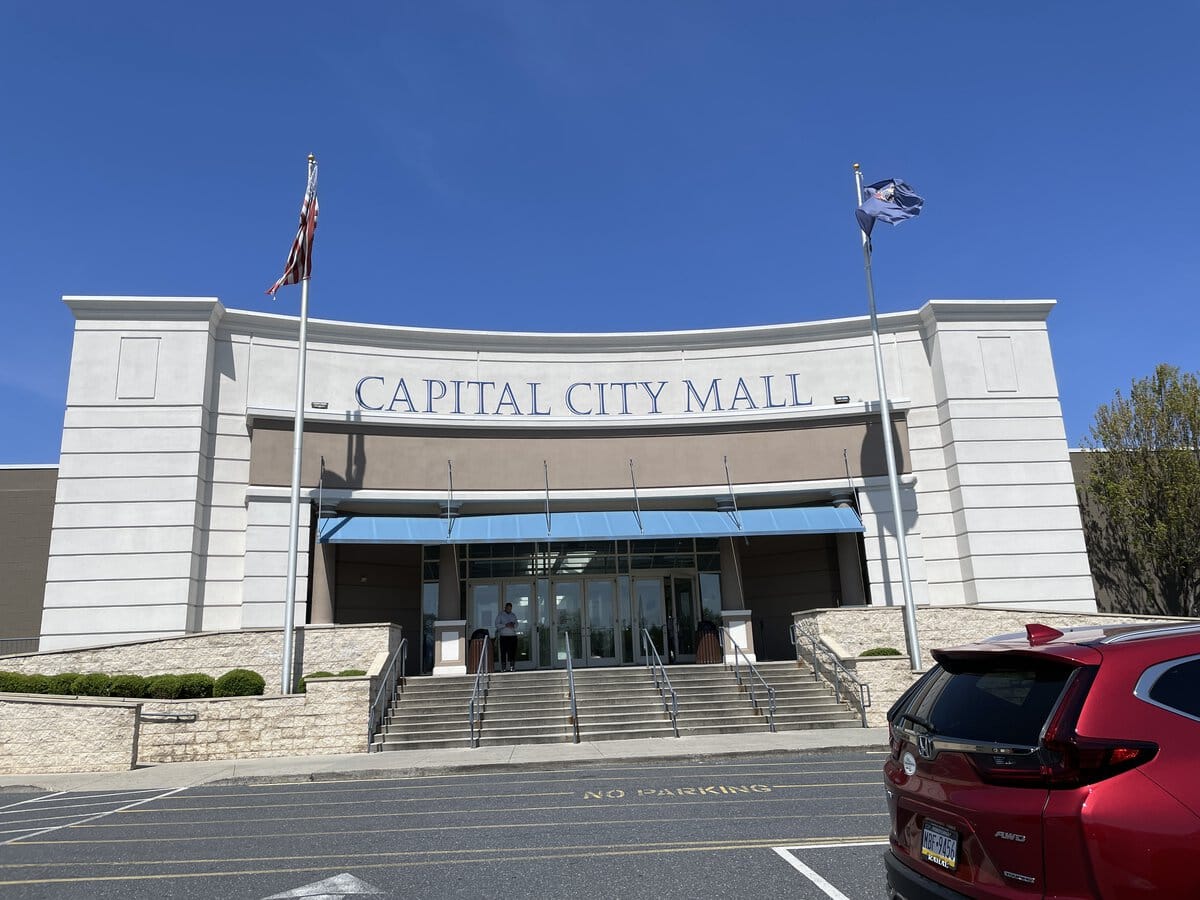Once There Was a Hospital on Hanover Avenue
In Allentown, Pennsylvania, there used to be a hospital so large it practically ran its town. People who grew up nearby knew the name, even if they never set foot inside.
Allentown State Hospital sat on 1600 Hanover Avenue for nearly a century, holding patients, staff, stories, and eventually, a vacancy that stretched out longer than its most crowded years.
The buildings are mostly gone now. But the footprint, and everything tied to it, is still shaping what comes next.
The Blueprint Years and Opening Day (1901-1950)
The idea for Allentown State Hospital started quietly in 1901.
By the time it opened its doors on October 3, 1912, the project had taken over a decade and nearly two million dollars, the final figure on the build: $1,931,000.
Back then, that amount could have funded entire neighborhoods.
Pennsylvania invested in seven psychiatric hospitals across the state, and this one served Lehigh, Northampton, Carbon, Monroe, Pike, and eastern Schuylkill counties.
The location wasn't accidental.
The Lehigh Valley had been growing in both population and infrastructure, and the state saw the area as a practical hub for long-term psychiatric care.
By the mid-20th century, that decision paid off in numbers.
In 1950, the hospital reached its highest recorded population: 2,012 patients.
The campus had expanded to house multiple residential wards, staff quarters, utility buildings, and activity centers.
What took shape on Hanover Avenue reflected the assumptions of its time.
Mental health care often meant physical removal from daily life.
The large, brick buildings, the wide green lawns, the layers of fences and internal roads, it was all designed for a world that handled psychiatric care with separation.
Anyone looking for things to do in Allentown, Pennsylvania, today wouldn't find much of that original layout still standing.
But in its prime, the hospital was a city within a city, built to stay, and for a long time, it did.

Seclusion Ends, Beds Empty (1951-2010)
By the early 1950s, Allentown State Hospital had already passed its peak in occupancy, and from that point forward, the trend moved in only one direction.
The landscape around mental health care was changing fast.
Medications like Thorazine were entering use.
Public attitudes, shaped by news reports and policy shifts, had begun to question whether massive, isolated institutions were still necessary, or ever had been.
Through the 1970s and into the 1980s, community-based mental health programs gained more ground.
State hospitals had fewer incoming patients and tighter budgets.
By the late 1990s, the shift was visible in the census at Allentown.
On paper, there was room for thousands. In reality, only a fraction of the beds were occupied.
In November 1998, something unusual happened.
Allentown State Hospital became the first psychiatric hospital in the United States to operate completely without seclusion.
Not reduce it. Eliminate it. The milestone didn't attract national fanfare, but inside professional circles, it was watched closely.
For those still working in older facilities, the move raised practical questions: How?
What changed? Could it be sustained?
Even with those policy shifts, the hospital's long-term future had already been written into broader state planning.
The Pennsylvania Department of Public Welfare began identifying which hospitals would close.
For Allentown, the official closure came on December 17, 2010.
Some residents were relocated to Wernersville State Hospital in Berks County.
Others moved into supervised residential programs scattered across the counties the hospital once served.
Demolition Bids and Interim Tenants (2010-2022)
Once the hospital closed, attention turned to the land itself.
The site wasn't small. It covered nearly 200 acres off Hanover Avenue, and it sat close to the city center, which made it hard to ignore.
The buildings, though emptied, still stood through the early 2010s.
The Pennsylvania Department of General Services opened bidding to demolish the full complex, including the main administrative structure.
TCA Properties, based in Doylestown, acquired the property.
The company took on the role of clearing it. Most of the buildings, including the historic center block, were razed by December 28, 2020.
It was a large project, complicated by the age of the construction and the presence of lead and asbestos.
Demolition and site cleanup went forward in stages, with state oversight and multiple contractors involved.
Not everything was flattened.
Two structures were left standing and reused by Community Services for Children, which operates local Head Start and Early Head Start programs.
Those buildings now handle administrative and program logistics across Pennsylvania.
It's one of the few remaining threads tying the property to public health work, even if the original mission looks nothing like what's happening there now.
In between the utility work and redevelopment plans, a different use briefly brought attention back to the site.
In 2019, Allentown State Hospital appeared in the film "Glass" by M. Night Shyamalan.
Crews filmed portions of the movie on location.
For a few days, trailers were parked near the old entry roads, and cameras moved through spaces that, until recently, had held real patients.
Redevelopment Pitch and Land Transfer
By 2022, the hospital had been closed for over a decade, and the property was no longer seen as a leftover parcel.
City Center Investment Corp. stepped in that September, acquiring the 195-acre site for about $5.5 million.
The land deal came after years of stalled interest, shifting zoning conversations, and environmental review.
City Center already had a track record in Allentown real estate, and the purchase moved them into east Allentown with a large footprint to shape.
The plan submitted was labeled Northridge. It wasn't pitched as a single-use project.
Instead, it was described as a mixed district with residential, healthcare, education, and recreation components.
In December 2024, the Allentown City Planning Commission approved the master plan.
According to that document, City Center intends to build between 625 and 750 townhomes, a micro-hospital, an assisted living facility, offices, and retail-adjacent parcels.
Green space wasn't left out. Seventy acres are reserved for outdoor use.
Before construction could begin, state guidelines required site remediation.
The demolition process had already cleared most structures, but underground utilities, soil conditions, and remaining hazardous material had to be resolved.
The total remediation cost, including lead and asbestos removal, reached $12.7 million by late 2024.
The cleanup was coordinated with the Department of Environmental Protection.
As of spring 2025, no structures have gone up. But the land is mapped, and contracts are in place.
The next phase will move from concept drawings to foundations, likely beginning with housing inventory aimed at middle-income buyers and leaseholders.
School Approval and Traffic Planning
One element in the Northridge blueprint has drawn more planning energy than others: a new public school.
The proposal, backed by the Allentown School District, places a K-8 facility near the northern edge of the development, on 16.7 acres off Hanover Avenue.
In November 2024, the school board voted to approve the schematic design.
It includes a two-story structure with roughly 200,000 square feet of classroom and administrative space.
Athletic fields are part of the site layout.
Construction timelines point toward an opening date during the 2027-2028 academic year, though site prep could begin earlier depending on traffic studies and permitting.
The school isn't intended as an isolated campus.
Its layout was drawn to fit into the walkable design of Northridge, with residential streets and park zones wrapping around it.
🍀









Really enjoyed your visit to the Allentown State Hospital. Believe it or not, my mom’s senior class trip was to this hospital. I always thought that was odd because our class trips were to places such as Gettysburg or Washington D.C. But I guess that’s the sort of trips they took back in 1957. Thanks again!
It's great to hear that you enjoyed a visit to the Allentown State Hospital. Your mention of your mom's senior class trip to the hospital in 1957 highlights the rich history of educational excursions. The Allentown Hospital likely held significant historical and educational value during that time. Observing how educational practices and destinations have changed over the years is intriguing.